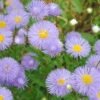**The Integration of Marigold Flowers in Herbal Blends**

Marigold flowers, with their vibrant hues and myriad medicinal properties, have been a staple in herbal medicine for centuries. Known for their anti-inflammatory, antimicrobial, and wound-healing properties, marigolds are often incorporated into various herbal blends to enhance their therapeutic effects. In this article, we explore the integration of marigold flowers in herbal formulations and the synergistic benefits they offer when combined with other medicinal herbs.
**1. Calendula and Chamomile: Soothing and Calming Blend**
The combination of marigold flowers (Calendula officinalis) and chamomile flowers (Matricaria chamomilla) creates a soothing and calming herbal blend that is particularly beneficial for promoting relaxation and relieving stress. Both marigold and chamomile possess anti-inflammatory and sedative properties, making them effective allies for alleviating anxiety, insomnia, and nervous tension. This blend is often used in teas, tinctures, and bath preparations to induce a sense of tranquility and promote restful sleep.
**2. Marigold and Lavender: Skin Healing and Aromatherapy**
Marigold flowers and lavender flowers (Lavandula angustifolia) complement each other wonderfully in herbal formulations designed for skin healing and aromatherapy. Marigold’s anti-inflammatory and wound-healing properties synergize with lavender’s antimicrobial and calming effects to create a potent blend for treating cuts, burns, and other skin irritations. Additionally, the aromatic profile of lavender enhances the sensory experience of herbal preparations, promoting relaxation and stress relief through aromatherapy.
**3. Calendula and Echinacea: Immune-Boosting Powerhouse**
The combination of marigold flowers and echinacea root (Echinacea purpurea) forms a dynamic duo with potent immune-boosting properties. Marigold’s antimicrobial and anti-inflammatory actions, coupled with echinacea’s immunomodulatory effects, create a formidable herbal blend for enhancing immune function and combating infections. This blend is often used to prevent and treat colds, flu, and other respiratory infections, as well as to support overall immune resilience during times of stress or illness.
**4. Marigold and Ginger: Digestive Support and Anti-nausea**
Marigold flowers and ginger root (Zingiber officinale) combine synergistically to provide comprehensive digestive support and alleviate nausea and gastrointestinal discomfort. Marigold’s anti-inflammatory properties help soothe digestive inflammation, while ginger’s carminative and antiemetic properties aid in digestion and relieve nausea, indigestion, and motion sickness. This blend is commonly used in teas, tinctures, and digestive bitters to promote healthy digestion and alleviate gastrointestinal symptoms.
**5. Calendula and St. John’s Wort: Mood Balancing and Nerve Tonic**
Marigold flowers and St. John’s wort (Hypericum perforatum) come together to create a mood-balancing and nerve-tonic blend that supports emotional well-being and nervous system health. Marigold’s anti-inflammatory and analgesic properties complement St. John’s wort’s antidepressant and anxiolytic effects, making this blend effective for managing mild to moderate depression, anxiety, and nerve-related pain. This blend is often used in tinctures and herbal infusions to uplift mood, reduce stress, and support overall emotional resilience.
**Conclusion**
The integration of marigold flowers in herbal blends offers a multitude of therapeutic benefits, ranging from skin healing and immune support to mood balancing and digestive aid. By combining marigold with complementary herbs, such as chamomile, lavender, echinacea, ginger, and St. John’s wort, herbalists can create synergistic formulations that address a wide range of health concerns and promote holistic well-being. Whether used in teas, tinctures, salves, or bath preparations, marigold-enhanced herbal blends exemplify the harmonious union of nature’s healing gifts and the art of herbal medicine.


